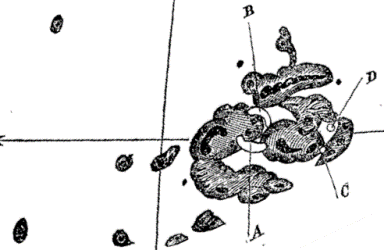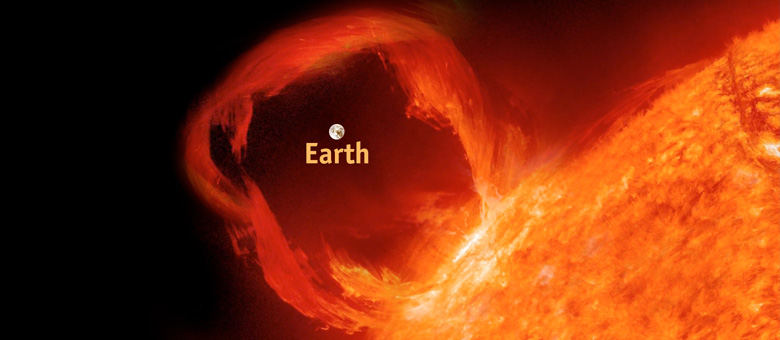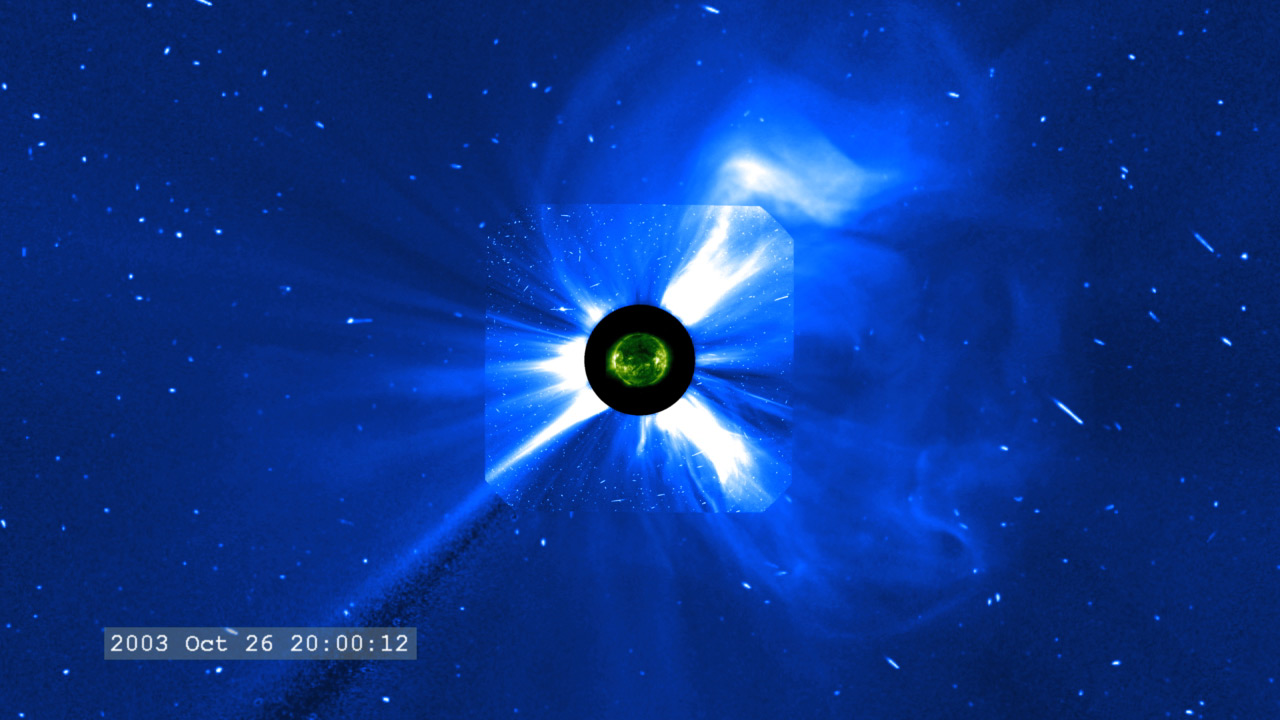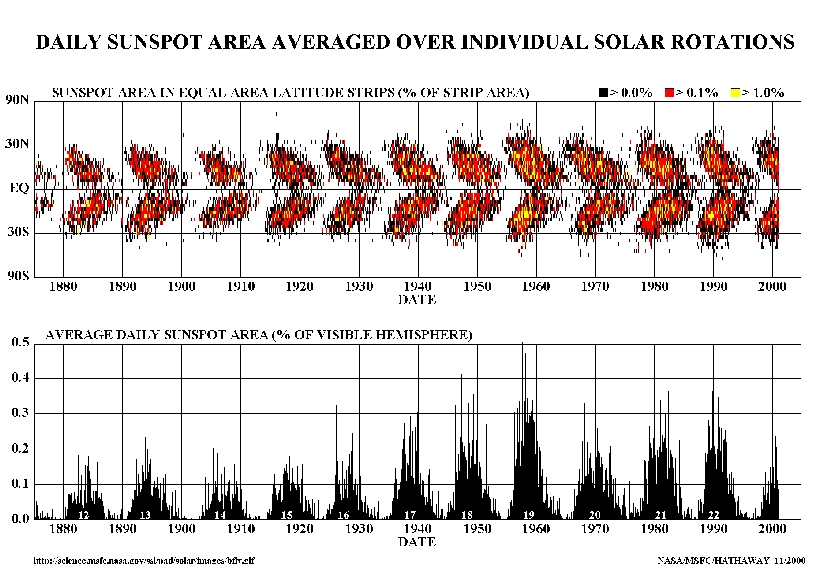Eruptive processes in the Solar Atmosphere
In general solar atmosphere comprises of the charge particles (protons, electrons) associated with the magnetic field. This makes it suitable for the rarest of the rare and impulsive plasma processes to occur in such environment. Following are a few of known processes occurring in the solar atmosphere.
- Solar Flares
- Coronal Mass Ejection (CMEs)
Solar Flares
The discovery of solar flare goes back to September 1, 1859, when R.C. Carrington and R. Hodgson observed the first localized minute-long brightening in the continuum of white light. Local flaring of the Sun has been reported at all wavelengths accessible from the ground and from space. Therefore, Solar flares are termed to be a process resulting in the sudden, rapid, and intense variation in brightness.

|

|
Present understanding of the underlying physical process during a flare commences with the magnetic energy being built up in the solar atmosphere, which is suddenly released. Flare radiation may be observed across the entire electromagnetic spectrum i.e. from radio waves at the long wavelength end, through optical emission to x-rays and gamma rays at the short wavelength end. Typically 10^32 ergs of energy is estimated to be released during a flare in as short as 1000 seconds. To illustrate further, the amount of energy released is the equivalent of millions of 100-megaton hydrogen bombs exploding at the same time.
There are typically three stages to a solar flare. First is the precursor stage, where the release of magnetic energy is triggered. Soft x-ray emission is detected in this stage. In the second or impulsive stage, protons and electrons are accelerated to energies exceeding 1 MeV. During the impulsive stage, radio waves, hard x-rays, and gamma rays are emitted. The gradual build up and decay of soft x-rays can be detected in the third, decay stage. The duration of these stages can be as short as a few seconds or as long as an hour.
Solar flares are not the phenomenon which can be seen merely with the naked eyes against the bright emission from the photosphere. (DO NOT LOOK DIRECTLY AT THE SUN! IT MAY DAMAGE THE EYES.) However, specialized scientific instruments are used to detect the radiation signatures emitted during a flare. The radio and optical emissions from flares can be observed with telescopes on the Earth. Observations of flare in X-rays and gamma rays require telescopes in space, since these emissions do not penetrate the Earth's atmosphere. Observational overview of the flare may be referred from the link Flare: Observational Overview.
Coronal Mass Ejections (CMEs)
Coronal mass ejections (CMEs) are eruptive phenomena occurring in the solar atmosphere. CMEs are termed to the huge gas bubbles embedded with the magnetic field lines, which are expelled out from the solar atmosphere, and are as frequent as the flare during the peak of the solar activity.
History of CMEs observation is not as old as that of solar flares. The earliest evidence of such huge and energetic phenomena came from observations made with a coronagraph on the 7th Orbiting Solar Observatory (OSO 7) from 1971 to 1973 (Refer the link). As may be noted in the image of the CME, it is taken with the help a coronagraph. Coronograph is a specialized instrument, which is designed in a way to produces an artificial eclipse of the Sun by placing a blockage at the instrument opening having its size same as that made by the Sun on the instrument.
In addition to the aforesaid eruptive processes, several interesting statistical as well as event based studies have been made from the observations obtained from the Sun. Following are a few from the list which will be discussed here:
- Solar Cycle
- Coronal Heating
Solar Cycle
Solar cycle is mainly referred to the cyclic variation of number of sunspots visible on the photosphere of the Sun. The number of sunspots increase and decrease over time in a regular, approximately 11-year cycle, called the solar or sunspot cycle. However, the exact length of the cycle can vary from one cycle to the other. More sunspots may be directly associated with increased solar activity viz. flares and CMEs. The duration in which highest number of sun spots in any given cycle are recorded is designated as the “solar maximum,” while the lowest number is termed to the “solar minimum”. Moreover, the location of the sunspot group varies over solar hemisphere from pole to the equator in due course of a solar cycle. Such phenomena is the result of "Solar Dynamo" acting on the magnetic field in the solar interior. If we plot the sunspot location for the entire solar cycle, it takes the shape of a "butterfly" and therefore such plot is also known as butterfly diagram.
Coronal Heating
Coronal heating is a problem which refers to millions of degrees hot corona, which is far away from the source of energy (the core of the Sun) than ~ 6000 K temperature of the solar photosphere. Simple illustration of the problem is given as following (taken from the link):
"Imagine a flame coming out of an ice cube. A similar effect occurs on the surface of the Sun. Nuclear fusion in the centre of the Sun heats the solar core to 15 million degrees. Moving away from this furnace, by the time one arrives at the surface of the Sun the gas has cooled to a relatively refreshing 6000 degrees. But the temperature of the gas in the corona, above the solar surface, soars back up to over a searing 1 million degrees. What causes this unexpected temperature inversion has puzzled scientists since 1939."
Several attempts have been made to understand the problem. Low-intensity but very frequent solar flares, Alfven waves and many other magnetic phenomena are contemporary potential candidates of the on-going research.
Click here to see links to other interesting sites







